Wine and food pairing guide to enhance food appreciation
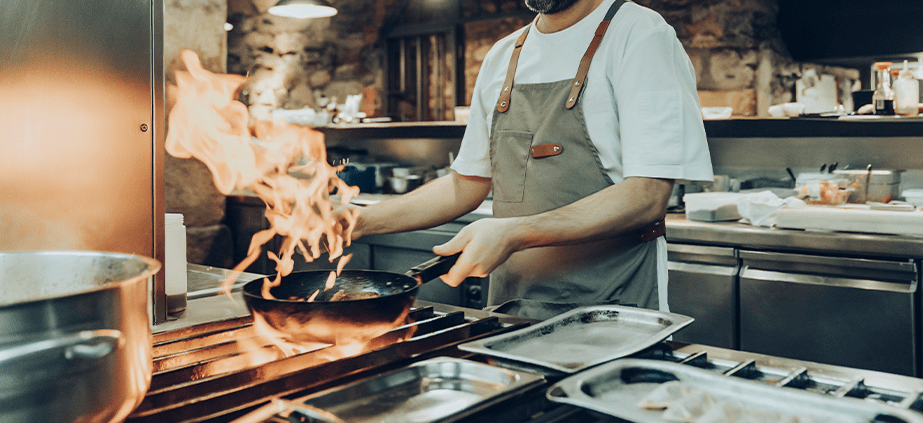
Wine is frequently paired with food to delight palates, with culinary experts and sommeliers dedicating their careers to discovering what wine goes with what food.
Whether you’re interested in a career in the culinary industry after finishing high school, or are looking for a career change and have a passion for food and drink, learning more about pairing wine and food is a great place to start.
In this wine and food pairing guide, we share:
- How to pair food with wine
- Factors to consider when pairing wine and food
- What wine goes with what food
Introduction to wine and food pairing
Wine and food pairing includes finding suitable wines to accompany stand-alone foods, dishes, and desserts.
Countries including Italy and France are among some of the pioneers of wine and food pairing. But wine pairings could go back as far as ancient Greece. Since then, wine and food pairing has evolved to the immersive and enjoyable dining experience we know today.
How to pair food with wine
Pairing food with wine enhances, enriches, and highlights many tastes and flavors. Before delving into our wine and food pairing guide, we share a few tips.
- Take note of the flavors and aromas of both the food and wine.
- Ensure that the wine complements the food being served.
- Serve a contrasting wine and food pairing, for example, to balance acidity.
- Consider whether the wine is light or heavy-bodied.
- Pair light-bodied wines with lighter dishes.
- Pair full-bodied wines with hearty or creamy dishes.
Factors to consider when pairing wine and food
Professional chefs and culinary experts frequently share their expertise with tips in a wine pairing guide.
If you’re interested in culinary careers or looking to expand your knowledge of food and wine pairing, familiarizing yourself with some of these factors is recommended.
- Notes and flavors of wine: The notes and aromas wines radiate essentially determine which food or food group they're best paired with.
- Sweetness: As a general rule, a sweet wine is best paired with a sweet dish, such as a dessert. Likewise, a savory or dry wine goes best with savory or rich dishes.
- Acidity: Acidity refers to its "tartness". Tart wines are frequently paired with sweet foods or foods containing fat.
- Weight of the wine: Wines come in various body weights, including light, medium, and full-bodied. Light-bodied wines are typically refreshing to drink, whilst full-bodied wines are richer in texture.
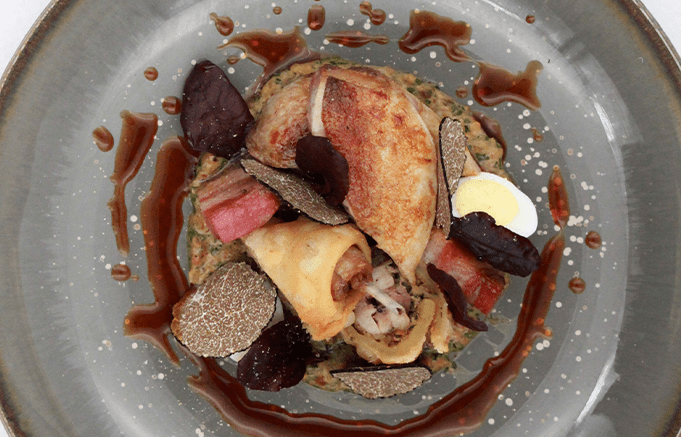
Pairing wine with different cuisines
Factors such as the notes, aromas, and weight of wine will help you decide which food or dish it should be paired with. But the cuisine you’re pairing wine with is also important.
Different cuisines have various spice levels, blend different flavors, have specific textures, and incorporate a selection of ingredients. For example, Indian cuisine embraces spice and can incorporate meat and many vegetarian dishes. Italian cuisine is Mediterranean, and may include salads, rustic stews, pasta, pizza, and sweet desserts.
As these two cuisines have noticeable differences in flavors and textures, the wine pairing would be different.
Red wine pairings
Our wine pairing guide will now explore ideal pairings, starting with red wine.
Red wines are often found paired with red meats, rich seafood, cured meats, and some desserts. Understanding whether you’re handling a classic, bold, or light red wine will help determine which foods you serve it with.
Classic red wine pairings
Classic red wines include malbec, merlot, and pinot noir. These wines all have unique tastes and textures, so they can be paired with different dishes.
Some classic red wine pairings:
- Steak
- Pork
- Beef
- Duck
- Lamb
- Rabbit
- Pheasant
- Venison
- Crab
- Lobster
- Pasta
- Swiss cheese
- Blue cheese
- Brie Mushrooms
- Root vegetables
- Berries
- Flavorsome sauces
Bold red wine pairings
Bold red wines include zinfandel, cabernet sauvignon, and syrah. Below is a selection of suitable pairings:
- Pork
- Beef
- Steak
- Lamb
- Halloumi
- Gouda
- Pizza
- Risotto
Bold red wine also pairs well with spiced food, and hearty vegetable dishes with rich sauces.
Light red wine pairings
Including Chianti, Rioja, and vinho verde, notes of berries and vanilla make light red wine suitable for pairings including:
- Cured meats
- Lamb
- Lentils
- Pasta
- Cheese
- Pizza
- Risotto
- Fish
- Tapas dishes
- Burgers
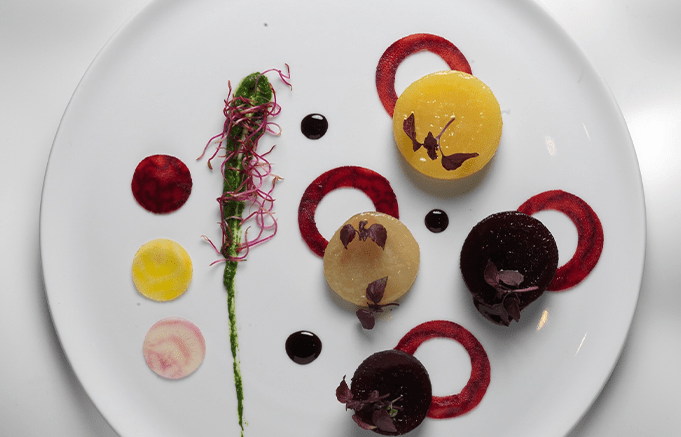
White wine pairings
From crisp whites to rich white wines, it’s not uncommon to find pasta dishes, white meats, and fish served with white wines. Below we share a wine pairing guide for these two different types of white wines.
Crisp white wine pairings
Originating from Italy, France, America, and New Zealand, crisp white wines including pinot grigio and sauvignon blanc can be paired with:
- Vegetables
- Salads
- Chicken
- Shellfish
- White seafood
- Pasta
- Risotto
- Goat cheese
- Fruit-based desserts
- Thai food
- Mexican dishes
Rich white wine pairings
Including pinot gris and chardonnay, rich white wines are ideal for pairings such as:
- Creamy cheeses
- Chicken
- Seafood
- Turkey
- Sushi
- Pasta
- Vegetables
- Legumes
Sparkling wine pairings
Champagne, Prosecco, and Cava are among some of the most popular sparkling wines originating from Italy, Spain, and France. With varying notes, such as citrus and nuts, and higher levels of acidity, sparkling wine pairings include:
- Seafood
- Shellfish
- Chicken
- Sushi
- Lamb
- Root vegetables
- Nuts
- Rice
- Salad
- Cured meats
- Cheese
Dessert wine pairings
From sweet ports embodying berry notes and chocolate to sweet sherries, dessert wines originate from regions such as Portugal and Spain. Known best for accompanying desserts, pairings include:
- Cheese
- Nuts
- Olives
- Cured meats
- Figs
- Dark chocolate
- Tiramisu
- Fruit pies
In addition, dessert wine pairings can include sushi, vegetables, and dishes including paella and risotto.
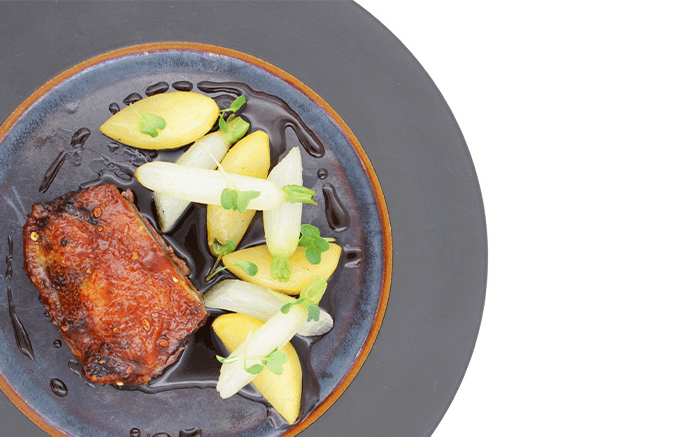
What makes a good wine pairing?
Throughout this wine and food pairing guide, we’ve shared foods that often go best with certain wines. But you may still wonder what makes a good wine pairing. Another way to make a good wine pairing is to consider congruent and contrasting pairings.
Congruent pairings vs. contrasting pairings
Congruent pairings are those that see wine complement food, whether served as a dish with a mixture of flavors, a dessert, or a savory snack.
A contrasting pairing balances flavors. For example, a contrasting wine and food pairing may reduce the acidity or spice of a dish through the qualities of a wine.
Food and wine pairing tips everyone should know
Culinary classes share many food and wine pairing tips. As our wine and food pairing guide concludes, here’s a recap.
- White wine pairings include white meat, white fish, and pasta. Red wines are best suited to red meats and desserts.
- Rosé wine pairings include seafood.
- Sparkling wines should be paired with shellfish, fruits, and cheeses.
- Dessert wines best accompany sweet treats.
- Sweet wines should be paired with sweet foods.
- Light-bodied wines are best for chicken and pasta dishes.
- Full-bodied wines go best with robust meats and complex dishes.
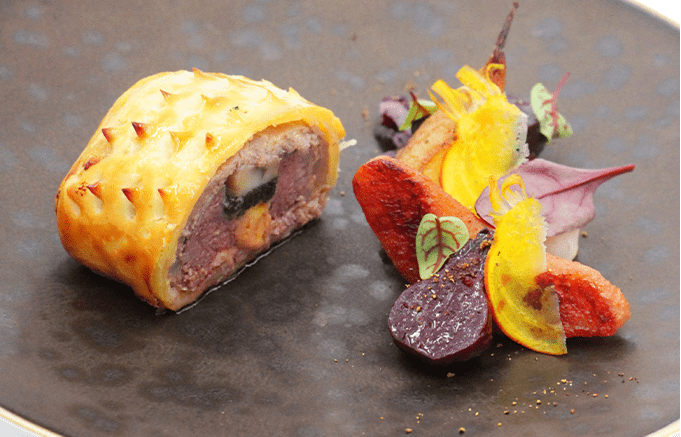
To summarize
If you aspire to a successful career in culinary arts, the courses at our culinary school in France can help you become a professional chef.
Launch your career with our bachelor's in culinary arts
Our three-year bachelor in culinary arts will equip you with knowledge and practical skills for success in the hospitality and culinary industry.
Change your career path with our culinary arts diploma
Over 22 weeks, you’ll be immersed in diverse skills to begin your dynamic career as a chef or culinary professional in the wine and food pairing field.
You can also learn more about what you can do with a culinary degree and determine whether culinary school is worth it on our website.


